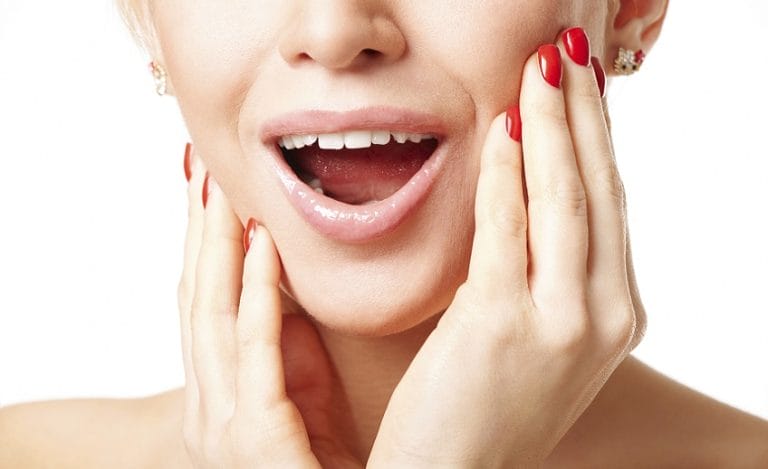TMJ – Temporomandibular Joint Disorder
Temporomandibular Joint Disorder or TMJ occurs when there are facial issues concerning the jaw and muscles. The TMJ joint is what connects the skull’s temporal bones to the jaw. The temporomandibular joint is similar to a sliding hinge. The TMJ is what enables the individual to open and close their mouth. When the TMJ is not performing correctly, the result is discomfort and pain.
According to the American Dental Association:
Diagnosis is an important step before treatment. Part of the dental examination includes checking the joints and muscles for tenderness, clicking, popping or difficulty moving. Depending on the diagnosis, the dentist may refer you to a physician or another dentist.
The Symptoms and Signs of TMJ
There are a lot of symptoms and signs experienced when an individual has TMJ. Determining if the individual has TMJ is not simple. This is because there are so many issues that can cause the exact same symptoms and signs. The best way to receive an accurate diagnosis is to see a dentist. The dentist will take the appropriate steps. This includes:
• Taking a complete dental and medical history
• Taking all necessary X-rays
• Completing a thorough clinical examination
The most common symptoms of temporomandibular joint disorder include:
• A jaw that is locked in place, goes out of place or becomes stuck
• Headaches impersonating migraines, pressure in the back of the eyes and earaches
• Facial swelling
• Tenderness in the muscles of the jaw
• Discomfort in facial areas including the ear and jaw
• Difficulty biting and chewing
• A popping or clicking noise when the mouth is opened or closed
• A swift change in dental occlusion or the way the upper and lower jaws come together
Diagnosing TMJ
The only way to diagnose TMJ accurately is for a dentist to perform a complete evaluation of the jaw joint, the surrounding structures and to look for an occlusion. The dentist may look for inflammation by checking the tissues and muscles of the neck and head. In most cases, panoramic X-rays are necessary. The dentist may recommend specific movements and exercises.
The individual may receive a referral to a maxillofacial surgeon for further diagnosis and evaluation.
Methods to Relieve the Discomfort of Temporomandibular Joint Disorder
In some cases, medication will be prescribed to offer the individual relief from the discomfort. Certain medications can be purchased over the counter. The dosage and type of medication are determined by the specific issue. The individual needs to discuss any medications they are currently using for safety. This includes vitamins, supplements and herbs. The most common medications for treating this condition include:
Analgesics and Anti-Inflammatories: Analgesics offer relief from rheumatoid arthritis, osteoarthritis and discomfort. Anti-inflammatories decrease discomfort, heat, swelling and pain while helping restore function. (NSAIDs) nonsteroidal anti-inflammatories relieve both discomfort and inflammation.
Antidepressants: This medication helps with (bruxism) teeth grinding and decreases discomfort. A higher dosage is often prescribed for the treatment of depression. Lower dosages offer relief from the symptoms of temporomandibular joint disorder. This can also decrease pain in the muscles. A body chemical shown to improve sleep called serotonin is increased. This is what helps with bruxism while the individual is sleeping.
Muscle Relaxants: These are for the treatment of myofascial pain. This discomfort is common in the muscles or soft tissues around the TMJ. Muscle relaxants help ease the tension in the muscles to decrease pressure on the TMJ resulting from tight jaw muscles.
TMJ Treatment Options
This type of therapy focuses on the TMJ. The joint can be treated in several different ways. This includes:
• Exercises to strengthen the jaw and facial muscles.
• Gently manipulation to restore motion and decrease discomfort. The medical profession will relax the ligaments and muscles surrounding the joint with their hands. These are often the cause of the discomfort.
• The individual can manage and treat their symptoms through a self-care program. This usually includes exercise. Heat and ice can be used to provide relief from pain.
• The sound waves emitted by ultrasound can decrease swelling and discomfort. This will also improve the swelling.
The Treatment for Painful Muscles
One of the trigger points is tight muscles. These can be painful when touched, causing pain in other areas. The medical professional concentrates on trigger points through the use of:
Palpation: The application of pressure on specific areas of the face and jaw using the fingers.
Massage: Massage outside and inside the mouth is important for improving circulation and relaxation.
Stretching and Cold Spray: This is used to relax the muscles.
Pain Relief: Anesthetics may be injected by the dentist to relieve discomfort.
The Treatment for Inflammation
Movement is difficult to impossible once the joint becomes inflamed. The medical professional may recommend treatments including:
A Cold Pack: This decreases pain and reduces swelling. A cold pack is applied for between ten and twenty minutes. This process is repeated three to four times per day. A cold pack is made by putting ice cubes inside of a plastic bag with a seal. A thin cloth or towel is used for wrapping the bag. A cold pack should never be placed right onto the skin.
Gentle Exercise and Rest: This will increase motion. One of the most frequently used exercises is isometric exercise. The pressure is placed on the jaw while the movement is resisted.
Biofeedback: This is important for treating TMJ because it teaches the individual which muscle activities are inappropriate or excessive. The individual is taught skills for muscle relaxation for proper functioning of the TMJ. When the contraction and tightness of the muscle are decreased or eliminated, it can remove the pain. Sensors are used to monitor the heartbeat, breathing, brainwaves and blood pressure of the body.
Stretching May Help Your TMJ
Physical function and flexibility can be improved through stretching exercises. Two stretching exercises are defined below.
• Place your thumb beneath your chin while pressing downwards. Keep the force of your thumb at a moderate level. Open and close your mouth against this force. Hold your mouth open for five to ten seconds.
• Open your mouth as wide as possible without causing any discomfort. Place you index finger between your lower lip and chin.
Acupuncture as a Form of TMJ Treatment and Relief
Acupuncture has been effectively used for the treatment of TMJ. Acupuncture will not eliminate the cause of any structural anomalies including disc displacement or degenerative changes. Acupuncture can help decrease the discomfort and pain associated with temporomandibular joint disorder.
If you are experiencing pain due to TMJ, contact our office today and speak with your dental care associate.



